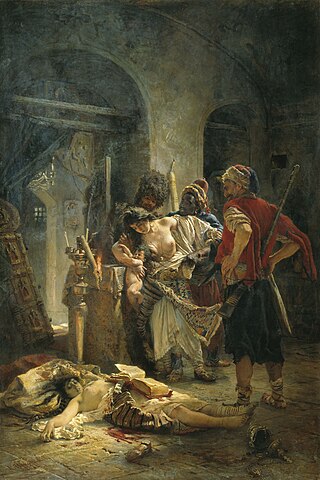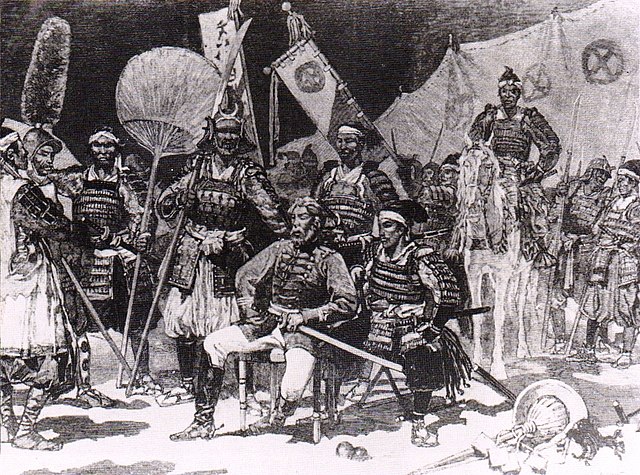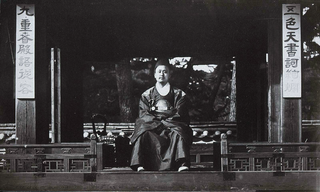June 27 1884. The new republic, which now proclaims itself "Korea"(대한민국), completely restructures the government system. Many in the Reform Party were greatly enamoured by the American model in comparison to the Japanese counterpart; thus, the new government reflects such a preference. The Six Ministries system of the State Council, for one, is modified to the following: Department of Personnel; Department of the Treasury; the State Department; the War Department; Department of the Interior; Department of Justice; the Post Office and Communications Department; Department of Public Works and Industry; Department of Education; and the Department of Agriculture and Commerce. The mayor of Seoul(한성판윤) is also directly appointed by the President. From there, however, details differ vastly from the American model to meet the needs of the new Republic. The Vice President, who also acts as president at the Central Assembly(중추회) and has the right of vote in case of a gridlock, is elected by popular vote on the entirety of Korea. However, the President is elected from the Central Assembly - and the Assembly is one-third appointed by the Chairman of the Senior Council(원로원), one-third elected from the city of Seoul and one-third elected from all other regions of Korea. Although having the Chairman become the President was initially considered, it was deemed that the pressure of having to uphold both party philosophy and administrative activity would be too much for one individual to handle. Any legislation sent for approval by the Central Assembly could be vetoed by the President(under consent from the Chairman) or the Supreme Court. The Chairman, on the other hand, was chosen via consensus from the Senior Council; members of the Council were selected by the President and determined via vote from the Reform Party en masse. The Chairman makes weekly reports to the President, giving advice on relevant issues and serving an advisory role; he is to also fill the ceremonial roles that monarchs have previously performed on certain occasions. Such a system allowed the Reform Party to stay in power until it saw Korea fit enough to be given more direct rule. The first President to be elected is Kim Hong-jip, with all members of the Central Assembly voting for. The first Chairman of the Senior Council is Kim Yun-sik, leader of the Reform Party - chosen after a meeting for consensus. With pressure from regional conservatives, the Kim administration makes sure things are kept as same as possible: four of the Five Grand Palaces of Seoul are kept as public museums, with Kyongbuk-gung to be used as the Presidential Palace; Jongmyo remains a shrine for the kings and queens of Joseon, with Gojong and Empress Myeongsong soon to receive full funeral rites; Korea continued to send annual tributes to China, albeit in smaller amounts and lesser intervals. But one thing was clear: Korea has gone beyond the point of return. It will never be the same again.
June 28 1884. Word of the death of a kingdom and the royal family reaches Pusan, Pyongyang and other major cities. The news will spread to the entirety of Korea by the end of the month. Millions mourn the death of the ancient dynasty and thousands flock towards Seoul. Amongst them are angry conservative aristocrats, now devoid of any political power. As a form of protest they hold a mock funeral in front of Gwanghwa Gate.
This isn’t even the actual funeral! This isn’t my final form!
June 29 1884. French Prime Minister Jules Ferry, hearing of the developments in Korea, urgently requests Ambassador-in-residence Henryk Sienkiewicz to approach the Japanese with an offer of Franco-Japanese alliance to fight the Chinese together. Sienkiewicz is pessimistic of the idea to the point that the message is not delivered at all to the Imperial government.
June 30 1884. The Qing government receives word of what has transpired in Korea. They also hear of Lee Ha-eung fleeing to Tientsin. While they are incensed at the loss of their staunchest tributary state, the Imperial Court doubts a military deployment into the Korean peninsula would be diplomatically healthy or even logistically possible, with the Sino-French War not going so well. They decide to bide their time for another day.
July 3 1884. The Dow Jones Transportation Average, consisting of eleven transportation-related companies(nine railroads and two non-rail companies), is created.
July 10 1884. Funeral of Gojong and Empress Myeongsong. Thousands have flocked to the capital city to honour the past monarch. The closest known living heir to Gojong's throne, Lee Ha-eung's older brother Lee Choi-eung(Heungin Regent), officially hands the power of government from the Chunju Lee dynasty to the Republican government. President Kim Hong-jip's speech from a podium set up in front of the Gwanghwa Gate, later to be described as the "Gwanghwa Address", expressed the determination of the current government to continue the reforms Gojong pursued during his rule along with the traditions of Joseon. Being aware of Gojong's fondness for modernisation and reform, the conservatives become divided in opinion.
July 12 1884. Chairman Kim Yun-sik communicates to the Japanese embassy that they find it reasonable and preferable that the military training program being continued in China be expanded, at least continued as the reports coming in show they are excelling in every field. The Japanese embassy sends a reply later during the week that Korea may continue its military training programs in China, in return for a Korean police force be trained by Japan. The Koreans agree to the compromise.
July 16 1884. The first President of the Republic of Korea, along with the Chairman, is formally sworn into office. Dignitaries present included senior members of the Chunju Lee family, members of the Reform Party, the ambassadors of Japan and China, and senior government members. The full order of the ceremony is as follows:
the guests rise as the band announces the entrance of the President upon the stage;
a representative of the Reform Party(in place for the Central Assembly) swears the President into office;
a representative of the Chunju Lee family(in place for the previous government) hands the National Seal to the President;
the President gives the inaugural address;
the guests rise as the band plays four ruffles and flourishes and the march "Hail, Columbia";
the guests rise as the band announces the entrance of the Chairman wearing traditional costume upon the stage;
the guests present bow towards the Chairman;
a representative of the Reform Party(in place for the Central Assembly) gives a speech congratulating the Chairman;
the guests present bow towards the Chairman as the band plays four ruffles and flourishes and the march "Hail, Columbia" and the Chairman walks offstage;
the guests rise as the band announces the entrance of the Chairman wearing western costume upon the stage;
the senior officer of the Japanese military garrison(in place for the Korean military) gives a speech congratulating the Chairman;
the band plays "The Battle Hymn of the Republic"(in place of the national anthem);
the guests give three cheers("만세 삼창");
the guests present bow towards the Chairman;
the President and Chairman exits;
the guests exit.
As would be noted the President's inauguration was modelled after that of the United States, while the Chairman's was after that of Joseon. This ceremony will be continued as one of the most significant traditions that upholds the Republic throughout the years.
July 23 1884. With demand for Korean-language Bibles exploding after the declaration of the Republic, and with even more demand expected, the Department of Agriculture and Commerce announces that paper and printing ink amongst other stationaries can be commercially produced, as well as bought without any tariffs.
July 26 1884. Election campaigns for both the Vice President and members of the Central Assembly are announced. The election itself is to be held in roughly two years, with government-commissioned officers to oversee the elections. Rights of vote are given to all married Koreans, although this is later modified to exclude family-owned slaves.
August 5 1884. The cornerstone for the Statue of Liberty is laid on Bedloe's Island in New York Harbor.
August 12 1884. Although several major reforms were being made, the two most significant were: tax reform, greatly increasing the revenue the government desperately needed; and education reform, greatly increasing the roles of maths, sciences, language and history in primary and secondary education. With help from foreign missionaries, the Korean government also plans the opening of 10 modern schools around the country. The Korean government also sees the opening of the Translation Agency(번역국), which is to make foreign-language textbooks and works of science available in Korean.
Sometimes, in order to get an education, girls had to pretend they were boys. We won't even know if all of them are girls in that photo.
September 1 1884. Another 50 are sent to China for the military training program. They are to also learn of general industrial production and engineering.
October 2 1884. The Sino-French War sees an outbreak of nationalism within China, including Hong Kong. Severe clashing between Chinese workers and Sikh constables results in one rioter shot dead.
October 13 1884. The International Meridian Conference in Washington, D.C. fixes the Greenwich meridian as the world's prime meridian.
November 4 1884. Democratic Governor of New York Grover Cleveland defeats Republican James G. Blaine in a very close contest to win the first of his non-consecutive terms.
November 23 1884. Many of the government advisors employed by Japan came to Korea after the end of their contracts. Some, however, came straight to Korea from the West. One of them was Georg Michaelis, jurist and economist from the German Empire. He lands in Inchon by steamship that afternoon.
November 25 1884. Half of the first 38 sent to China have arrived at Inchon after their 4-year training program. They will become the backbone of the Republican Armed Forces(RAF, 공화군). The other half travel down to Shanghai and arrive some time later.
December 3 1884. Further major reforms have been made. One is the transition of Korean units of measure to the Metric system, along with the Gregorian calendar system. Another was a reform in the judicial system, making courts from the regional level independent from local administration. Most important, however, was the establishment of a central Bank(공화은행) - spearheaded by rising industrialist Suh Sang-ryun and others, it centralised monetary policy and reported to the Department of the Treasury.
December 24 1884. Korea becomes a member of the Universal Postal Union by ratifying the Treaty of Bern. The first package to be delivered from abroad arrives on Christmas Day.








